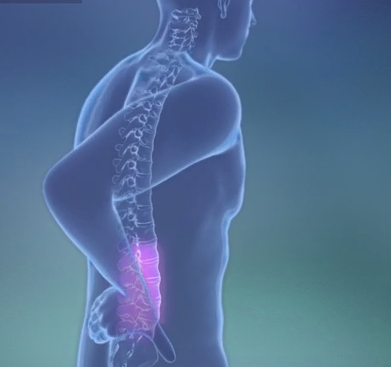The condition of inflammation or irritation of nerves occurring in lumbar area vertebra is known as lumbosacral neuritis. The lower back region consists of L1 to L5 vertebral bones, the sacrum, and a big bone (which connects the pelvis to the spinal column) at spine’s lower end. The fibers or nerve root of any of the nerves occurring in the lumbar area section of spine can suffer from irritation or inflammation.
In addition to the varied nerves, the lower back area is also home to several delicate structures like joints, blood vessels, muscles, and discs, etc. Hence, any kind of pain in the lumbar area needs to be correctly diagnosed so that the right treatment can be given to the patient.
Types of lumbosacral neuritis
Lumbosacral neuritis is classified into 3 different types, as mentioned below:
- Lumbar polyneuritis: This form of lumbosacral neuritis is further classified into 2 other sub-types, one marked by lumbar motor nerve inflammation and the other by lumbar sensory nerve irritation/inflammation. The symptoms of the sub-types tend to differ, but both cause problems in several sections of the lumbar area.
- Lumbar mononeuritis: It is also sub-divided into two new forms, with one affecting lower back sensory nerve and the other the motor nerve of lumbar area. Even though associated symptoms vary, both sub-types affect the same areas, like the lower back area and the lower body extremities.
- Mixed nerve: This form is defined by inflammation of sensory and motor nerves present in single or multiple parts of lower back spinal column.
Symptoms of lumbosacral neuritis
Some of the common signs and symptoms of lumbosacral neuritis are listed below:
- Patients may experience pain in lumbar region
- Radiating, sharp, and shooting pain across the legs
- Pain tends to be severe and unbearable. It may severely hamper daily life and adversely affect the quality of life
- Pain may occur along with weakness of muscles and skin sensation changes in the legs. Some kinds of motion can worsen the pain.
Patients may also suffer from below mentioned additional symptoms as per the diagnosis, the count of affected nerves and discs, and their location:
- Tingling feelings or sensations
- Neuropathic discomfort or pain
- Reduced muscle mass
- Imbalance
- Numbness
- Burning and prickly pain
- Diminished or poor reflexes
- Reduced muscle control and synchronization
- Muscle weakness and/or a muscle or muscle group may experience atrophy
- Patients may not feel mild pressure or touch on skin
- Persistent/chronic lumbosacral neuritis pain that occurs all through day and night
- Pain may be felt only at night
- Patients may not be able to feel cold or hot temperature changes.
Causes of lumbosacral neuritis
Lumbosacral neuritis is commonly caused due to below listed underlying conditions and risk factors:
- Herniated lumbar spinal disc: Flexible and soft bony structures occurring between vertebral bones are called discs. Their main function is to prevent friction between the different bones of the spinal column. Compression, rupture, dislodgement, or other disc problems can cause slipped disc/herniated disc/ruptured disc condition.
- Narrowing or compression of lumbar area spinal column: It may be caused by increased nerve pressure triggered by bone spur development; excess pressure from adjoining vertebral bone with ruptured disc; or tumor growth in vertebral column.
- Scar tissue: Adhesions or minor scar tissue may occur due to surgical treatment of some lumbar area problem. These may lead to compression and a subsequent case of lumbosacral neuritis.
- Infection: Patients with preexisting infectious diseases like diphtheria, AIDS/HIV, and hepatitis, etc have increased risk to inflammation of lumbar area nerves and development of lumbosacral neuritis.
- Inflammation: Endocrine disorders, diabetes, hypothyroidism, and cancer are known to cause inflammation which can then adversely affect the vertebral nerves present in lower back area and result in its inflammation/irritation.
- Exposure to varied toxins: Contact with ecological toxins or poisonous chemical as well as drug/medication interactions and alcohol dependency can also trigger lumbosacral neuritis.
- Diet: Intake of a diet that has minimal or no vitamins, minerals, or vital nutrients, (particularly B vitamins, thiamine, and niacin) can pose increased vulnerability to development of peripheral neuritis of lumbar region.
Treatment of lumbosacral neuritis
Lumbosacral neuritis is treated as per underlying causative disorder. A few treatment options are listed below:
- Intake of a nutrient-rich balanced diet can help alleviate lumbosacral neuritis triggered by diet deficiencies
- Doctors may prescribe NSAIDS, painkillers, steroid injections and other OTC/prescription medicines. Additionally, certain exercises, stretching, and assistive equipment like lumbar area cushion, etc may also be suggested.
- Acupuncture, chiropractic physical therapy, and other alternative treatment options are also helpful
- In case pain and inflammation associated with lumbosacral neuritis do not resolve with medications and other non-invasive therapies, then surgery may be needed to correct the problem of the lower back area spinal column and/or nerves.
